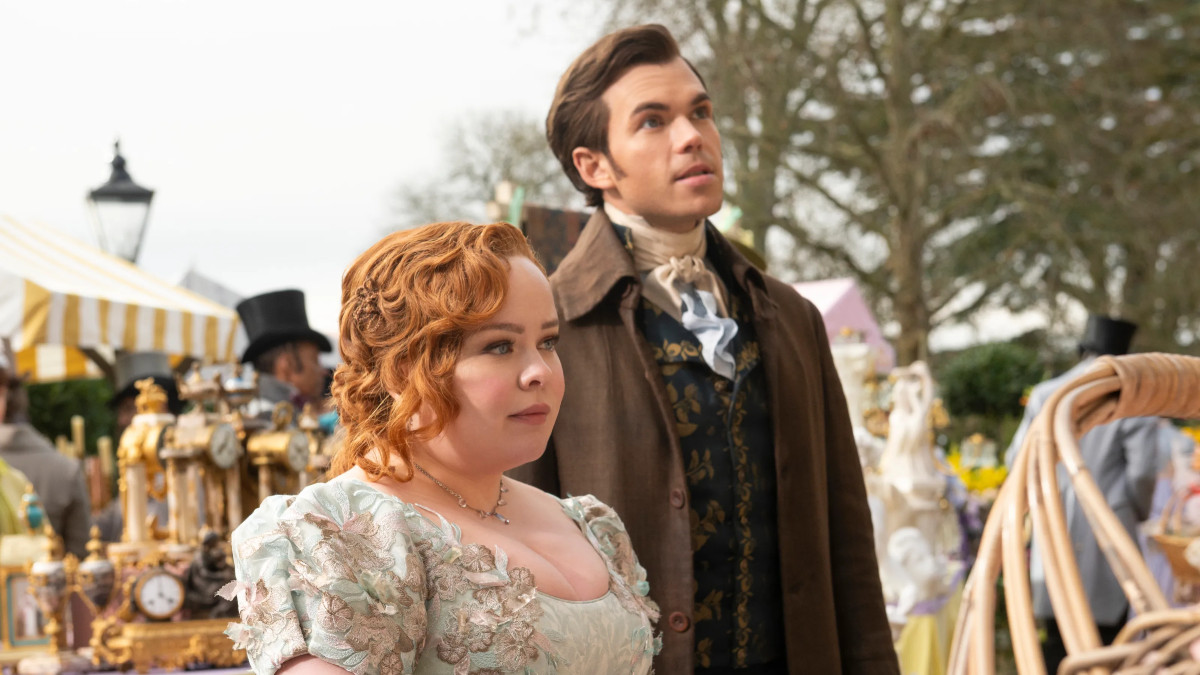One Change to Penelope and Colin’s Story Is a Big Improvement From the Book
I am a Romancing Mister Bridgerton girlie but this needs to be said.

All adaptations bring changes to the source material, and Bridgerton season 3 is no different, but one change in this particular season really stands out in how it improves upon the source material.
I know I’m not the only one who’s been rewatching the first four episodes of Bridgerton season 3 ever since they dropped on May 16 or blasting “Give Me Everything,” Regency Version, so many times that I’m pretty sure it’s climbing to the top of my 2024 Spotify Wrapped as we speak. And I know that because there’s a myriad of Bridgerton discussions that are popping up left and right on social media.
Spoilers ahead for the first four episodes of Bridgerton, so be aware if you aren’t caught up yet.
One that particularly fascinates me is the whole debate about which parts of the original story—written in Julia Quinn’s novel Romancing Mister Bridgerton, published way back in 2002—were changed as it was adapted into a different medium. It fascinates me because I think that this time the show actually improves on some aspects of the book, which is a big shocker to me first and foremost, since I’m usually a firm believer in the “nothing can ever compare to the original, especially if it’s in written form” tenet.
But the third Bridgerton season has managed to do so by changing one particular thing that has had a cascade of consequences—and that is a shortened timeline. In the show, Penelope is in her third year on the marriage market, having debuted in the same year as Daphne Bridgerton, back in season one. It’s definitely longer than ideal, but it’s not nearly enough to be considered a spinster. Penelope herself says to Colin that she’s “nearly” on the shelf before their fateful kiss in episode 2.
In the book, however, Penelope is well and truly a spinster after eight unsuccessful seasons. She has never found—or tried to find—a match, and her mother has given up the task altogether, moving her attention to her youngest daughter, Felicity, who’s absent from the show. And to be honest, I think it’s better that Penelope didn’t have to wait that long.
Sure, waiting is a pretty important part of Penelope’s character arc—I would assume that’s why she’s named Penelope, of all names, like the wife of the mythical Greek hero Odysseus, who waits for him to return home from the war in Troy for ten years as he’s blown from one side of the Mediterranean to the other by misfortune, angry gods, and monsters. And yet, even as a certified Romancing Mister Bridgerton enjoyer, I’ve always felt that something was not quite right.
While Penelope and Colin are very much a friends-to-lovers story, the fact that in the book she essentially waits for him for twelve years makes this trope veer in the direction of the Good Fat Girl™ who is quiet and unassuming and knows her place, and so the narrative eventually rewards her with her love interest finally noticing her. It could simply be me projecting, of course, but the book does put way more emphasis on Penelope’s body than the show does, and it was also published in 2002, when good fat representation wasn’t nearly where it is today—and it’s not like it’s stellar or even common nowadays.
And I’m aware that, even in the book, we can all agree that Colin has also been in love with Penelope for years and he just needed a considerable amount of time to realize it, and that Penelope isn’t really that “quiet and unassuming” since she’s been Lady Whistledown and kept the ton on its collective toes for a decade. I was also admittedly very fond of Penelope’s friendship with Lady Danbury, built at the edges of ballrooms when the former was very clearly entering the realm of spinsterhood, and especially of Penelope’s feelings of freedom at finally not having to perform for potential suitors and somewhat enjoying the invisibility of being on the shelf.
Then again, it’s a freedom tinged with melancholy, and as someone who more often than not feels the same way, I was very happy to see it disappear from the show. Maybe it’s because I can bring all that baggage to the table all by myself and want something else from my escapist period romance.
And it’s not just that Penelope doesn’t have to wait that long with the show’s shortened timeline. It’s that she also finds in herself that she can attract a suitor if she wants, and it’s a perfectly acceptable one by Regency standards—a marriage of convenience with someone who’s titled and possesses a large estate. It’s also explicitly stated that the relationship would be destined to remain loveless forever, which is not what Penelope wants, even if she tries to trick herself into being a pragmatist. So of course she eventually can’t help but choose Colin, with whom she has been in love for a good chunk of her life and who has finally managed to also realize his own feelings—and is on his knees confessing them, like all good period drama male leads should.
Have a tip we should know? tips@themarysue.com